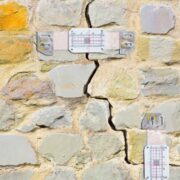

Radiofrequency shielding is a type of electromagnetic shielding that uses microwave frequencies to block harmful radio waves. A typical RF shield consists of a grounded metal frame and an electrically insulating material such as plastic, foam, or fabric. The metal frame provides electrical ground for the electrically charged portions of the shield, while the insulating material prevents electrical charges from leaking out of the shield and into other nearby objects.
The most common use for RF shielding is to protect sensitive electronic equipment from external interference or radiation. However, some RF shields are designed to provide additional protection against electric fields within the shielded area. For example, some medical devices are designed with built-in radio frequency shielding that can reduce the interference caused by their equipment’s electromagnetic fields.
How Does RF Shielding Work?
Radio and electromagnetic frequencies are emitted by all electronic equipment (EMF). Contrary to popular opinion, most EMF and RF radiation is non-ionizing and low energy, and there is insufficient evidence to support any negative biological effects.
RF energy is used to transmit and receive data by wireless technology devices such as cell phones, WiFi routers, wireless headphones, health monitoring equipment, remote controls, and speakers. They emit signals with enough power that receivers can decode and convert the frequencies into visuals, audible audio, or readable text. Even while some devices, such as Bluetooth earphones connected to a phone or laptop, can be designed to broadcast data to a particular receiver, it is occasionally possible for a 3rd device to receive and collect the signal undetected.
This is when RF shielding is helpful. A secure room’s glass windows and walls can be protected from unintentional and deliberate radiofrequency transmissions by installing EMF/RF shielding film. In the same way that it prevents undesirable frequencies from outside, it contains signals inside the room.
Infrared (IR) protection can also be obtained from EMF/RF shielding material. A subset of the electromagnetic spectrum are infrared waves. IR emits heat, whereas RF carries data. Extra IR shielding is necessary since stray IR radiation can cause electronic gadgets to become hotter. Therefore, IR shielding aids in maintaining a cool climate in spaces that house strong computing plus data storage equipment.
What’re the Uses of RF Shielding Technology?
Information security
The most common use of radiofrequency shielding is in information security. Radiofrequency shielding can be used to protect sensitive data from being intercepted during transmission and can also protect it against interference.
Radiofrequency shielding can be used in personal computers and mobile phones to prevent hackers from intercepting data while it’s being transmitted over the air. Wireless networking systems can also use radiofrequency shielding to prevent hackers from hacking into the network and stealing sensitive information.
Help improve the performance of medical devices
Radiofrequency shielding can improve the performance of medical devices through improved shielding against electrical fields, which may help avoid complications caused by electromagnetic interference (EMI). For example, patients implanted with pacemakers may experience discomfort due to electrical noise generated by the device itself or from nearby power lines. Radiofrequency shielding can help reduce this problem by isolating these devices from external electromagnetic interference (EMI).
Industrial control systems
Radiofrequency shielding is used to protect electrical equipment that generates and uses radio waves in industrial facilities, such as power plants, refineries, containerships, and oil rigs. Safety standards require radiofrequency shielding because of the potential hazards of stray currents flowing through these installations.
Network security
In a corporate environment, it is necessary to provide adequate protection for the IT infrastructure and the devices connected to it. This can be achieved by using radio frequency shielding on cables and connectors connecting different network devices. It is also possible to use this method in order to reduce electromagnetic interference (EMI) in industrial environments where there is a risk of EMI affecting sensitive electronic equipment such as computers or industrial machines.
Besides, network security personnel use radiofrequency shielding to protect their networks from attacks by hackers. Wireless networks are especially vulnerable to attack because they operate at RF frequencies. A hacker can use a portable antenna to send signals over a wireless network, causing interference and disrupting communications within the network itself. In addition, RF signals can be used as an entry point into a company’s internal network by attackers who have gained access via another means, such as a breach in firewall security.
Used in military applications
The other use for radiofrequency shielding is in military applications where high-powered radar waves are directed at enemy targets at great distances away – often hundreds or thousands of miles away – where they are invisible to conventional radar systems but emit powerful signals that can be picked up by personnel using specialized equipment known as radio receivers.
Promote privacy
In addition to EMF/RF shielding, RF window shields provide aesthetic and practical advantages. Dark-tinted versions of these films provide additional protection by helping to hide people gathered to discuss sensitive material in offices and private conference rooms. Additionally, they provide visual cover in place of blinds or curtains when used on outdoor glass windows or walls.
Reduce EMI
Radiofrequency shielding reduces electromagnetic interference (EMI/RFI) and radio frequency (RF) noise. It is a solution for the problems caused by electrical devices close to each other, especially when connected to the same power supply or communication media.
The most common application of this type of shielding is to reduce EMI/RFI from electronic equipment such as computers, monitors, printers, fax machines, routers, and modems.
Key Takeaway
Radiofrequency shielding is used to reduce the penetration of electromagnetic signals, especially those of radio and microwave frequencies. It is usually applied outdoors to reduce unwanted radiation from mobile phone masts and antennas.
Radiofrequency shielding can also be used to protect sensitive equipment from external interference, such as interference from other sources in the building. This is particularly important where multiple transmitters and receivers are located close to one another, such as in an office environment or in an operating theatre.














